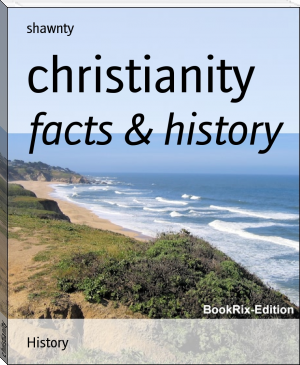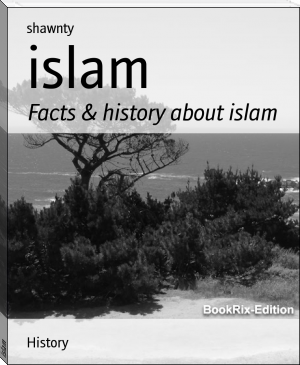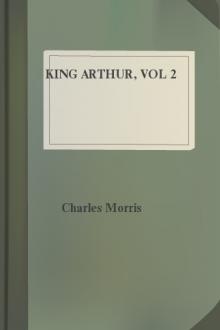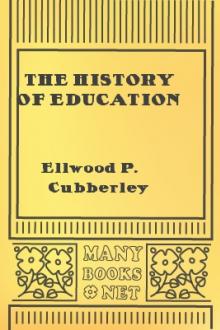The Philippine Islands, 1493-1898, - [buy e reader TXT] 📗

- Author: -
- Performer: -
Book online «The Philippine Islands, 1493-1898, - [buy e reader TXT] 📗». Author -
No papers whatever of Fray Martin de Rada [46] were left in this country; nor have I been able to discover any, although most diligent search has been made.
Among the other orders brought by this ship was one directing that a considerable sum of money be paid to Doctor Francisco de Sande. He says that this is due to him as salary; and for the payment of this is designated the greater part of the villages which belong to the royal crown of your Majesty. The fleets are maintained thereby, as well as other expenses of your Majesty here. This order is received with regret and sorrow, and the royal officials have sent a petition to this effect; and I too beseech your Majesty to declare if it be your royal pleasure that this man support himself at the expense of the royal service. May it be provided that we be not constrained thus in similar things.
In the ship that just arrived from Nueva España, there came eighteen descalced friars, a class of people who do much good in this land, on account of their mode of life and their poverty. Nevertheless, they come so eager to pass on to China that it would not be right to keep them here. Accordingly, in order to console them, I am now giving permission to the commissary who accompanied them, and to four other religious, both to go to Macau [Macao] to visit the house which they have there, and to pass to the bordering kingdom of Cochinchin. News is had that the king of the latter country asks for ministers to teach him our holy faith. I hope to God that benefit may be derived therefrom, for the salvation of those souls. I have also improved the opportunity of the commissary's departure to send by him to the Portuguese of Macau the news of the certainty of the late coronation of your Majesty. [47] Therefore I expect that that stronghold will be as peaceful as that of Maluco.
Through your viceroy of Nueva España I am sending a copy of the residencia of the doctor Sande, as that sent a year ago was lost with the ship to which it was entrusted.
Much pleasure was caused in the land by the arrival of the bishop, [48] and I received him as well as I could. On account of the austerity of his disposition and his wish to dominate, people do not like him; and he has caused much discontent among both ecclesiastics and laymen. His Christianity and zeal is worthy, and he will undoubtedly prove to be true. As your Majesty is better informed, you may provide accordingly. May our Lord guard your royal Catholic Majesty and increase your kingdoms, as we your Majesty's vassals desire. Manila, June 15, in the year 1582.
Royal Catholic Majesty, the most humble servant of your Majesty, who kisses the royal feet and hands.
Don Gonzalo Rronquillo de Penalosa
Bibliographical Data
Most of the documents in this volume are obtained from the Archivo general de Indias, Sevilla. The original MSS. (from copies of which our translations are made) are there preserved in two patronatos, as follows:
(a) "Simancas-Secular; Audiencia de Filipinas; cartas y expedientes del gobernador de Filipinas, vistos en el consejo; años 1567 á 1599; est. 67, caj. 6, leg. 6." To this belong Sande's report of 1576, his letters of July 29, 1578 and May 30, 1579, Peñalosa's letter, and the two documents of 1582.
(b) "Simancas-Filipinas; descubrimientos, descripciones y poblaciones de las Yslas Filipinas; años 1566 á 1586; est. 1, caj. 1, leg. 2|24." From this patronato we obtain Sande's report of 1577 (in ramo 40), and the record of his expedition to Borneo (no. 48). The former lacks a signature, and may be a duplicate copy, sent (as already explained) by another vessel to ensure the arrival of at least one copy in Spain, the signature being perhaps forgotten through some clerical oversight; but its date and composition show it to be Sande's report.
The bull erecting the diocese of Manila is taken from Doc. inéd. Amér. y Oceanía, xxxiv, pp. 72-79. The grant of indulgences is obtained from Fray Francisco de Santa Inés's Crónica de la provincia de San Gregorio Magno (Manila, 1892), pp. 215, 216.
The two royal decrees are translated from copies of the originals, which are found in the "Cedulario Indico" in the Archivo Histórico Nacional at Madrid; their pressmarks are: for the decree of 1879, "Tomo 31, F° 132b, n° 135;" for that of 1580, "Tomo 31, F° 193b, n° 184." The "Cedulario" contains forty MSS. volumes of these decrees, with a calendar index of twenty-four volumes.
NOTES[1] The Spanish phrase here is armas enastadas, literally, "weapons fastened to handles." See cuts of Chinese battle-axes (from specimens in Musée d' Artillerie, Paris) in Auguste Demmin's Arms and Armor (London, 1877), p. 442.
[2] The day of St. Andrew falls on November 30, according to the church calendars.
[3] This narrative is given in Juan Gonzales de Mendoza's Hist. China, part ii, book i, ch. ix-xxix.
[4] Marco Polo, the noted Venetian traveler, was born about 1256, and died in his native city in 1323. His father and uncle were also travelers; they went to Tartary in 1255, returning to Europe in 1269, as envoys from the noted Kublai Khan. Two years later, they returned to the court of that ruler, accompanied by the young Marco; and they remained in the service of the Mongol emperor until 1292, when they returned to Venice. Marco's account of his travels and observations was written as early as 1307. A Latin version of it was published in Antwerp, about 1485; and one in Italian at Venice, in 1496. Many other editions and translations of it have since been issued—perhaps the most notable being that by G. Pauthier (Paris, 1865). See this editor's account of Polo and of his work, in Hoefer's Nouvelle biographie générale, t. xxxix, art. Polo; Pauthier shows that this work must have been originally written in French. Kublai Khan at that time had his capital at Pekín, not at Kingszé.
[5] The Great Wall of China was constructed during the reign of Hoangti, the second emperor of the Tsin dynasty (about 244 to 210 B.C.); it was built to protect the Chinese land from the invasions of the Tartar hordes on the west and north, among whom were those later known as Huns.
[6] The oil extracted from sesame (Sesamum indicum); it is used by the natives for the hair, and in medicine.
[7] Chichimecos (meaning "braves") was a term applied to all the wild tribes of Mexico; it was also used specially to designate the hunting and pastoral tribes in the northern provinces of the present country of Mexico—who, according to Humboldt (New Spain, Black's trans., London, 1811, i, p. 133), came to that country about 1170. See also G.P. Winship's Coronado Expedition (Washington, 1896), p. 524.
[8] A Malayan tribe, living in the provinces of Abra and Ilocos, in Luzón. See Sawyer's account of them, in his Inhabitants of Philippines (N.Y., 1900), pp. 275-280.
[9] The residencia is a Spanish institution, dating as far back as the fourteenth century, although its beginnings may be traced to the Visigothic codes. It required a judge or a governor, at the end of a term of office, to reside for a certain time (usually thirty or fifty days) at the chief place where he had exercised his functions. During that time, complaints of his conduct might be made by any person aggrieved, before an official appointed for that purpose. The residencia was a prominent feature of Spanish colonial administration. See Helps's Spanish Conquest in America, iii, ch. iii, for an account of this institution.
[10] "In fortification, a work of extraordinary height, overlooking the surrounding parts as a horseman overlooks foot-soldiers." (Webster's Dictionary.)
[11] This decree may be found in Recopilación de leyes Indias, lib. iv, tit. iii, ley xix. It seems to have been a general regulation, applied to any colonial possession as need might arise.
[12] Crawfurd says, in his Dictionary of the Indian Islands (London, 1856), p. 144: "In the language of the Bugis, whose country produces gold, we find a native word, ulawang, and this is again the case in the languages of the Tagalas of the Philippines, where we have the indigenous name balituk; while in the language of the volcanic Bisaya Islands we find the word bulawang, most probably a corruption of the Bugis word."
[13] There is some mistake in this calculation; for the Chinese tael is equivalent to 1.1334 ounces, and the Spanish onza to 1.0161 ounces, in English or U.S. avoirdupois. The mace is one-tenth of the tael. 8 onzas = 1 marco; 2 marcos = 1 libra = 1.016097 U.S. pounds. The equivalent of one libra, then, would be nearly 12 taels and 2 mace. By texuela is apparently meant the sheet gold previously mentioned.
[14] In New Spain, the hot and fertile regions along the coast, having an elevation of seldom more than 1,000 feet, are called Tierras calientes ("regions of heat"). On the declivity of the Cordilleras, at an elevation of 4,000 to 5,000 feet, there reigns perpetually a soft spring temperature, which never varies more than 10° Fahr. The natives give to this region the name of Tierras templadas ("temperate country"), in which the mean heat of the whole year is about 70° Fahr. The plains elevated more than 7,000 feet above the sea level are called Tierras frías ("cold regions"), where the mean temperature is under 62° Fahr. See Humboldt's New Spain (Black's trans.), i, pp. 64-67.
The name Tierra Firme was applied not only to the northern part of the South American continent, but to a definite region which extended from the middle of the Gulf of Darien to Cape Gracias á Dios. It was at first called Darien, and Castilla del Oro.
[15] Span., de no aver pies ni cabeza, "as he had neither feet nor head."
[16] Cauchi is a phonetic form of Kuchi, the Malay appellation of the region known in recent years as Cochin-China, now a part of French Indo-China. Camboja is a better form of the name usually written Cambodia, also a part of French Indo-China; Sian is but a variant of Siam. Patani and Pahang are Malayan states on the eastern side of the Malay Peninsula. Jabas is a corruption of Jawa (now commonly written Java), the name of the principal nation inhabiting the island—the most civilized and moral of the Malayan peoples. Samatra is only a variant of Sumatra—the largest island, next to Borneo, of the Malayan archipelago. Achin (or Achen) and Mânangkabo (Manancabo) are states in the island of Sumatra; and Batachina evidently means "land of the Bataks," a tribe of cannibals dwelling near Achin. See Crawfurd's Dictionary for valuable information regarding all these regions.
[17] The three great military orders then vested in the crown of Spain—those of Santiago, Alcántara, and Calatrava.
[18] The order of Friars Minors (Fratres Minores), better known as Franciscans, was founded (1208) by St. Francis of Assisi.
[19] Mestizo: the offspring of a white man and an Indian woman, or of an Indian man and a white woman—of course, almost entirely the former. See interesting notes on this subject by Retana, in his Zúñiga, ii, pp. 525*, 526*.
[20] Herrera says (Descripción de las Indias, cap. 26), that: "The West Indies [Indias del Poniente] comprise all the islands and mainland [Tierra firme] beyond the line of demarcation of Castilla and Leon, as far as the western bounds of that said demarcation, the line whereof passes around the other side of the world, through the city of Malacca." This is conformable with the law of February 22, 1632 (Recop. leyes Indias, lib. i, tit. xiv, ley xxxiii), which locates Japan and the Philippine Islands in the West Indies; it also corresponds with the Constitution (Onerosa) of Clement VIII, issued December 12, 1600, to be found in section 4, wherein the Philippines are located, it seems, in the West Indies, or what are considered as such. However, what really is the dividing line has not yet been decided.—Rev. T.C. Middleton, O.S.A.
[21] The missionaries who effected the conversion [of the Malaysian tribes] were not, for the most part, genuine Arabs, but the mixed descendants of Arab and Persian traders from the Persian and Arabian gulfs—parties who, by their intimate acquaintance with the manners and languages of the islanders, were far more effectual instruments. The earliest recorded conversion was that of the people of Achin in Sumatra (A.D. 1206). The Malays of Malacca adopted Mahometanism in 1276; the Javanese, in 1478; the inhabitants of the Moluccas, about the middle of the fifteenth century.





Comments (0)